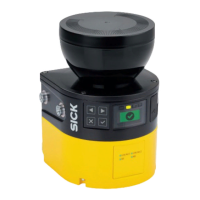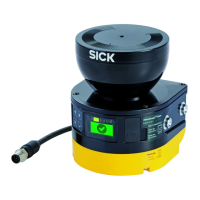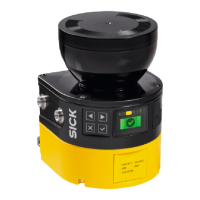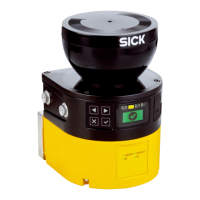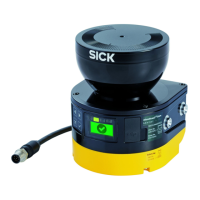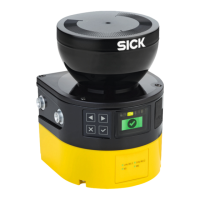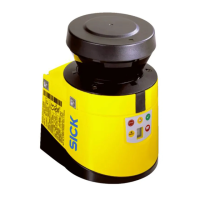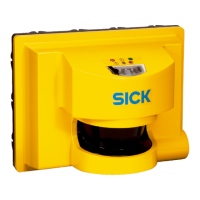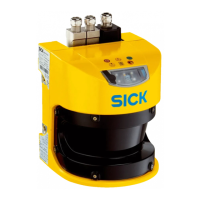Figure 5: Example datagrams
1
Data output, instance 1
2
Data output, instance 2
The data integrity of each individual UDP datagram is ensured with the UDP checksum.
The UDP neither ensures the arrival, nor the sequence, nor protection from duplicates.
Therefore each UDP datagram is complemented with an additional 24-byte header for
data output see table 1, page 14. Using the information in this header, the receiver
can recognize duplicates and the loss of datagrams, redo the sequence and re-combine
the (possibly fragmented) instances of the data output. As UDP does not offer the
opportunity to re-request lost datagrams, receivers must be able to deal with data loss.
Table 1: Data output datagram headers
Byte 0
1)
Byte 1 Byte 2 Byte 3
Datagram marker
Protocol Version (maj) Version (min)
Total length
Identification
Fragment offset
Reserved
1)
The bit sequence is from left to right and from top to bottom.
•
D
atagram marker (ASCII): "MS3<space>"
•
Protocol (ASCII): "MD"
•
Version Maj.Min (USInt/USInt): "1.0"
•
Total length (UDInt, Little Endian): Total length of the (possibly fragmented)
instance of the data output (without header)
4 D
ATA OUTPUT
14
T E C H N I C A L I N F O R M A T I O N | microScan3, outdoorScan3 8022708/2019-04-15 | SICK
Subject to change without notice
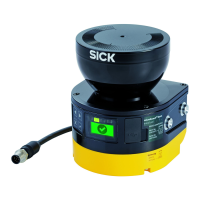
